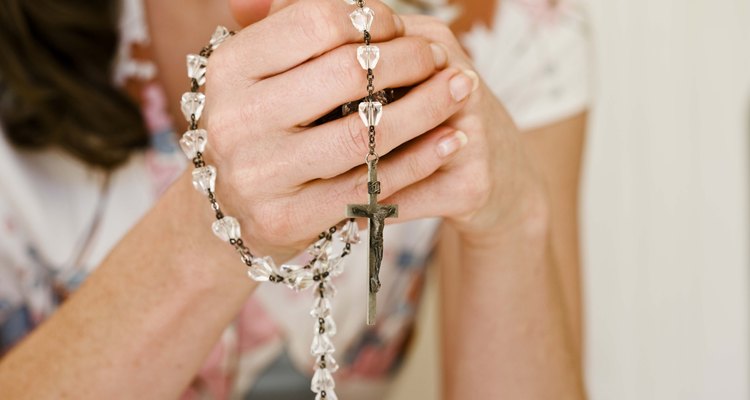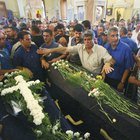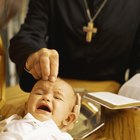
Jupiterimages/Polka Dot/Getty Images
A Catholic priest most often is involved in guiding the families of the deceased in the proper procedures for the preparation, funeral services and burial rites of their loved ones to ensure that Catholic directives are followed correctly. Specific Catholic canons guide families and funeral directors in preparing and performing traditional Catholics funerals.
Vigil
The vigil is the time when family and friends gather to celebrate the life of the deceased before the actual funeral. The wake, or vigil, may take place in the deceased’s home, in the church or in a funeral home. During the wake, an hour-long rite called the Vigil for the Deceased is performed. Prayers and songs are offered during this time and guests may publicly talk about the deceased. While a priest ideally leads the Vigil for the Deceased, when one is not available, a lay minister may be appointed by the pastor.
Funeral Mass
A formal mass is said during the funeral. The Funeral Mass may not be held on high holy days such as Easter, Good Friday, Sundays in Lent or in Advent. The Funeral Mass usually is held in the church where the deceased worshiped, but may be held in any Catholic church as long as the presiding pastor agrees. A priest or deacon preaches the homily during the Funeral Mass; and though the priest may recognize the deceased during the sermon, the focus of the talk is not on the person being mourned. The homily is instead reserved to talk about the life and death of Jesus Christ and man’s relationship to those events.
Committal Rite
The Rite of Committal is the service performed at the grave site or the place of internment. The Rite of Committal is never performed in the church although it may be done in a cemetery chapel. Cultural rituals are permitted during the Rite of Committal, such as throwing dirt on the coffin or placing material possessions on the casket, as long as they don’t interfere with the Catholic prayers and traditions. Military rites also are allowed during the Rite of Committal. The priest usually coordinates with the funeral director to organize and supervise the grave site procedures, which usually include additional prayers.
Burial
While Catholic guidelines permit cremation, the body of the deceased must be kept intact during the wake and the funeral mass, and cremation must not have been chosen because of conflicts with church doctrine. The Catholic Church prefers its members choose burial in a sacred Catholic cemetery, however. If cremation is chosen, the Rites of Committal then take place where the ashes are to be interred. The Church prefers cremated ashes to be treated like a body and be buried in a respectful manner in a special urn. Catholics are not encouraged to spread the ashes of the deceased.
Related Articles

Catholic Church Funeral Rules for ...

Christian Vs. Hindu Funeral

Can a Catholic Mass Be Held at the ...

Greek Orthodox Funeral Traditions

What Happens at Hindu Funeral Services ...

Funeral Etiquette & Who Buys Casket ...

Jewish Funeral Etiquette for Gentiles

How to Dress for a Bris Ceremony

What Happens to Dead People at a ...

The Godfather's Responsibilities on the ...

Minister Checklist For a Wedding

Do Muslims Wear White at a Funeral?

Jewish Baby-Naming Ceremony Etiquette

Etiquette for a Buddhist Wedding

What Are the Duties of a Godparent?

How to Plan a Traditional Latin Mass ...

What Is the Godparents' Responsibility ...

Should I Avoid Alfalfa Sprouts During ...

What Are the Duties of a Mistress of ...

How to Know What to Eat During Lent
References
Writer Bio
Linda Ray is an award-winning journalist with more than 20 years reporting experience. She's covered business for newspapers and magazines, including the "Greenville News," "Success Magazine" and "American City Business Journals." Ray holds a journalism degree and teaches writing, career development and an FDIC course called "Money Smart."
Photo Credits
Jupiterimages/Polka Dot/Getty Images